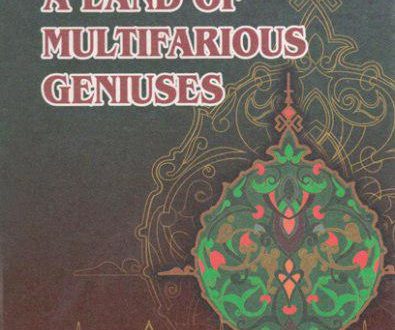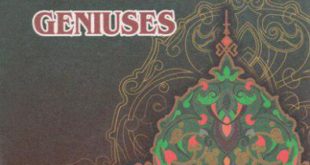Kasani occupied the position of the Head Master in Halaviya Madrasah up to the end of his life. A historian al-Qurashi writes that Kasani began to deliver lessons in Halaviya after Iftikhar ad-din al-Hashimi. During his career as a lecturer at the madrasah, lots of students and disciples of the scholar used to attend his lessons and they received the lessons with great satisfaction and effectively.
Learning the essence of his works, especially his book “Bidon”, we can assume that he was a representative of a party of the religious order called “as’hab at-tajrih” because in his works he-used to define the peculiarities of each party and its vision of reality from the religious point of view.
Kasani died on August 3, 1191 AD in the city of Halab. He was buried in a graveyard called Maqami Ibrahim Khalil situated out of the city where his wife had been buried. His tomb is used now as a place of pilgrimage. People believe that the prayers and wishes asked from Allah there will come true.
Kasani’s wife estimated Fatima binti Alauddin as-Samarqanrli was born in Samarkand but the sources do not provide am information about her date of birth and death. She received tin primary education on the Hanafian law from her father Alauddin as-Samarqandi, the first acknowledged lawyer of the Hanafian ordei She entirely learned her father’s book “Tuhfat al-fuqaha” by heart that was devoted to the main rules and principles of the Hanafian law. Besides, she mastered the most important arts and knowledgi of that time. She was an excellent lawyer in matters of tin Hanafian order and famous for her handwriting, as she was an incomparable calligrapher.
Having moved to Halab, the spouses Kasani and Fatima had great fame among their supporters and disciples. The ruler of Halab Nuriddin az-Zangi showed great attention and respect to the personality of these spouses and used to ask their advice in matters of the Islamic law. Sometimes Fatima used to correct the mistakes allowed by her husband in matters of law which Kasani accepted kindly and with respect. Deciding the legal matters dealing with family affairs, she used to write the decisions herself with a nice handwriting which her father or husband confirmed with their personal seals.
When Alauddin al-Kasani and his wife Fatima binti Muhammad expressed their intention to return to Maveraunnahr, the ruler of Halab Nuriddin Mahmud ibn Zangi (died in 541-569/1146-1174) sent an official letter asking them to stay in Halab. Taking into consideration the fact that al-Kasani would not refuse the wish of his respected wife, the ruler sent the letter to Fatima binty Muhammad. The messenger being a man Fatima refused to accept the letter, and he went back to the Royal Court. Astonished by Fatima’s devotion to her faith and belief, the ruler then sent a woman as a messenger. Only then, she accepted the suggestion of the ruler and stayed there up to the end of her life with her husband.
As the original sources inform us, al-Kasani loved his wife with devotion and had a great respect and appreciation towards her. After the death of his wife, he used to visit her tomb every Friday. Fatima remained in the history as the first woman in Halab to sell her golden jewellery and give charities for the lawyers of Halab for the whole month, and thus she established such an act of charity which is followed even today in Halab.
After the burial of the spouses Fatima binti Muhammad and her husband al-Kasani, the graveyard was renamed as the “Tomb of (he Spouses”.
The spouses Alauddin al-Kasani and Fatima binti Alauddin as-Samarqandi left a son by name Mahmud. After the death of his parents, he was taken to be looked after and educated by the ruler Sultan az-Zair Ghazi, a representative of the dynasty of the Ayyubis.
Among the teachers of Alauddin Kasani the most respected one was Akuddin as-Samarqandi (died in 539/1143). Other original sources inform us that such well- known scholars of his time as Sadr-al-Islam Abu al-Yusr al-Pazdavi (died in 493/1100), Maymun al-Makhuli (died in 508/1114) and Majd al-Aimma as-Sarkhaki (died in 518) were his teachers and he received lessons from them.
Kasani was very proud of his teacher. To express his gratitude, he wrote about him with a kind of pride: “My teacher Sheikh Alauddin Muhammad ibn Ahmad as-Samarqandi is a great imam, owner of enormous knowledge and is a chairman of “ahl-as-Sunnah””.
The author of the book “Al-Muqaddima al-Ghaznaviya” Ahmad ibn Mahmud al-Ghaznavi and his son Mahmud were his main disciples. His full name was Ahmad ibn Muhammad ibn Mahmud ibn Said al-Ghaznavi and he died in Halab in 593 A.H. Before his death, he had left books under the title of “Ravza ikhtilaf al-ulama”, “Muqaddima fi-l-fiqh”, “Kitab fi al-usul al-fiqh”, Kitab ravza al-mutakallimin” and “Kitab al-muntaqa min ravza-1-mutakallimin”.
Among the books written by al-Kasani, the most important ones are those devoted to the Islamic law. Though some sources cited texts from these books, they did not reach us. A German scholar Brokkel-man thought by mistake that “Kitab at-ta’vil” which was devoted to the commentaries of the Holy Qur’an belonged to al-Kasani. In fact, it was written by another scholar Abdu Razzaq ibn Ahmad al-Kashani under the title of “Ta’vilat al-Qur’an”. The existence of that book (“Kitab at-ta’vilat”) is mentioned in some other sources as well.
Another book under the title of “As-Sultanu-l-mubin fi usul ad-din” is also considered by the authors to belong to al-Kasani. A well-known scholar Abdulhay Laknavi (died in 1304/1886) also mentions that al-Kasani wrote a book under the title of “Al-Kitab al-Jalil”.
 Imom Buxoriy xalqaro ilmiy-tadqiqot markazi bukhari.uz
Imom Buxoriy xalqaro ilmiy-tadqiqot markazi bukhari.uz











